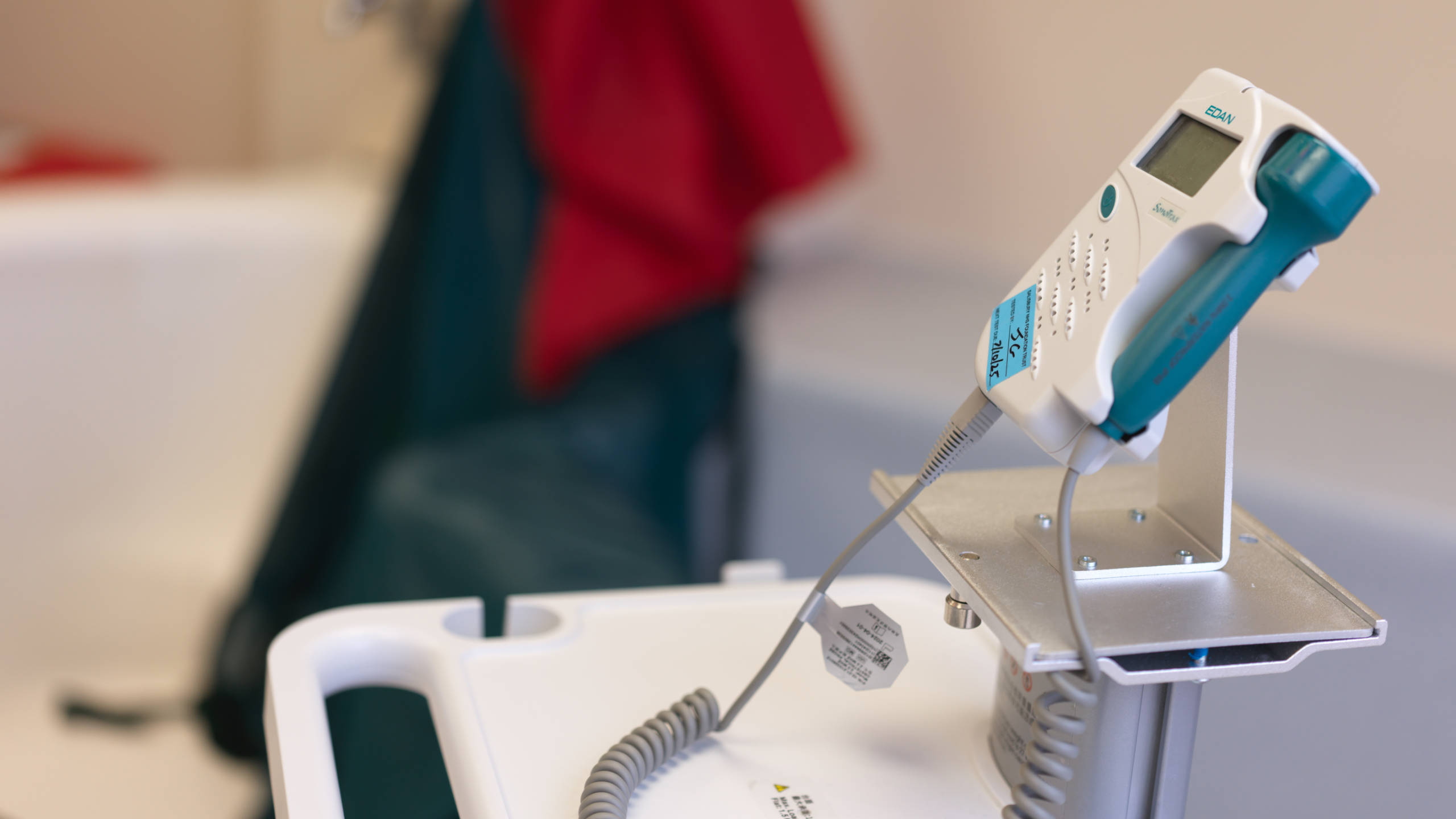
Emergency Evacuation
Birthing PoolUse this resource in conjunction with your real-world training

Experience Summary
This immersive 360-video experience demonstrates the emergency evacuation of a patient in labour from a birthing pool.
Clinical Context
Emergency evacuation from a birthing pool is a rare but high-risk event. If a birthing person collapses, has a cardiac arrest, or is otherwise unable to maintain their airway, rapid and safe removal from the water is essential to begin resuscitation or other life-saving measures. Proper procedures reduce risk of further harm: drowning, airway compromise, hypoxia, physical injury (to both mother and staff), and delays in care. Having a clear, practiced protocol helps ensure everyone knows their role, reduces panic, ensures efficient coordination, supports good manual handling to prevent staff injury, and maintains dignity and warmth for the birthing person throughout.
Key Steps
Staffing & Roles
A minimum of 8 people needed:
- One providing airway support.
- One to support the mother’s feet from within the pool.
- At least four to assist with the evacuation net.
- One preparing equipment/environment.
- One scribe (to document).Also, nominate a Lead for the evacuation, and a Scribe to record actions and timings.
Immediate Actions
- Pull the emergency buzzer / call for help. Activate “Obstetric Emergency” (2222) or “Cardiac Arrest” code.
- Check for hazards. Importantly, do not pull the plug; instead fill the pool fully to aid buoyancy.
Gather Equipment & Prepare Environment
- Key items: the evacuation net, flotation aid, bed (slide sheets), towels. Ensure bed is positioned at side of pool, slide sheets in place, bed brakes on, remove obstacles like pool steps if needed.
Evacuation Manoeuvre
- A staff member enters the pool to support legs/feet and prevent submersion. Protect airway using flotation aid around neck/under arms. Assess Airway, Breathing, Circulation (ABC); begin oxygen if needed.
- Using the net: handles from one colour to distinguish sides; pass net under knees, then shoulders. Everyone communicates (“Ready, steady, out”) to move together. Use slide sheets to damp friction, maintain stable bases, minimal force, safe posture. Keep load close, use strong leg and buttock muscles.
After Evacuation
- Once on bed, place mother in left lateral position, protect airway as needed. Remove wet clothing, dry thoroughly. Use towels/blankets to maintain warmth.
- Ensure chest/abdomen are dry before starting CPR if required, following Resuscitation Council UK guidance.
Training and Maintenance
All relevant staff must receive training and updates on these procedures. Lead midwives and transfer-handling training providers are responsible for ensuring this is done. Audits and reviews ensure compliance.
Learning Outcomes
- Identify Potential Risks and Triggers for Emergency Evacuation: Understand common situations that may require an urgent evacuation from a birthing pool, such as maternal distress, fetal complications, or equipment failure.
- Demonstrate Safe and Effective Evacuation Techniques: Learn and apply proper methods for lifting, supporting, and transferring the individual from the pool, ensuring minimal risk to both patient and care providers.
- Follow Emergency Protocols and Communicate Effectively: Practice clear communication and coordinated teamwork, ensuring rapid response, accurate documentation, and efficient handover to advanced medical care if necessary.
External Resources
